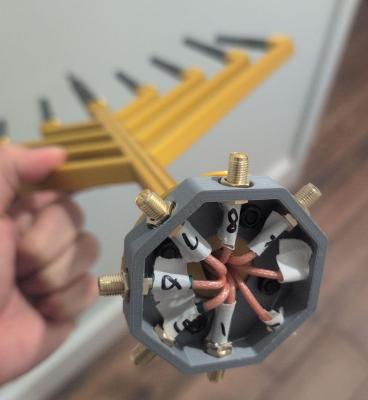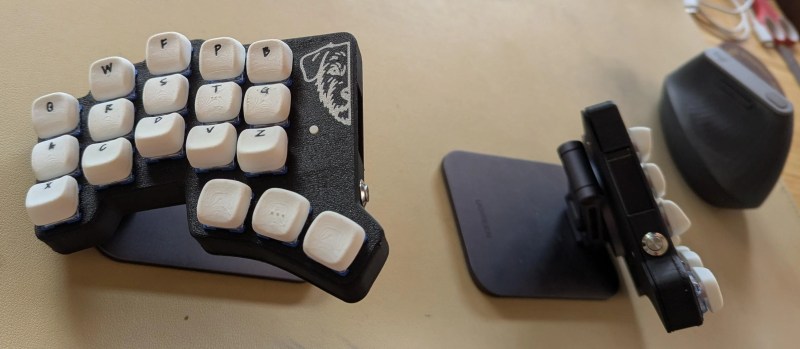Hanukkah is upon us, and if that’s your jam [Brian] has you covered with this stylish WiFi menorah. While we can’t say if it’ll stretch your last gigabyte of connectivity into eight, it’s certainly going to provide awesome signal with all those antennae.

[Brian] was inspired by the enterprise version of the Hak5 “WiFi Pineapple”, a high-powered pentesting device. Seeing its plethora of antennae, he was struck with the idea of mounting them all onto a menorah, so he did. The menorah itself is 3D printed (of course) with lots of coax running through it down to the base, where presumably it would be connected to a Pineapple or high-powered router.
The project is presented as more of an art piece than a functional device, as there’s no evidence that [Brian] has actually hooked it up to anything yet. But consider the possibilities — along with the traditional candles, you could “light” one WiFi antenna each night, bringing the holiday glow to 2.4 GHz or 5 GHz. If you prefer more visible wavelengths, perhaps this LED menorah would be more to your tastes.
If you’ve got a hack for your culturally-relevant holiday festival, be it Christmas, Hanukkah, or Festivus, we’d love to see it. The tips line is open all year round.



















